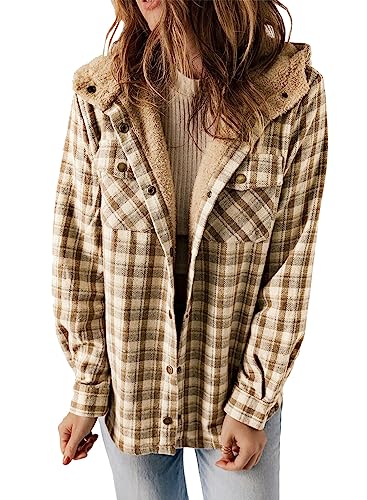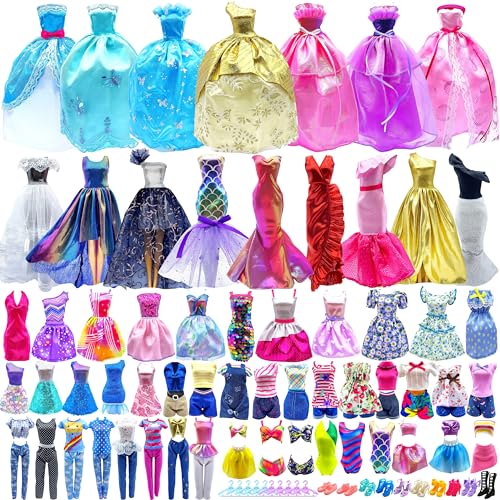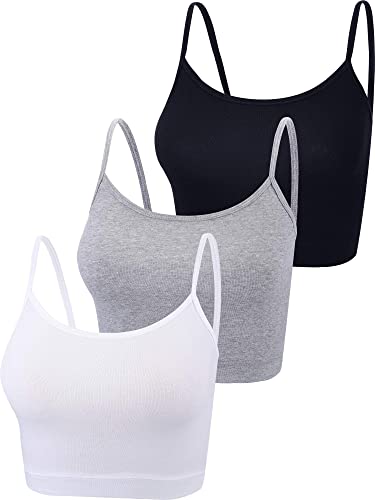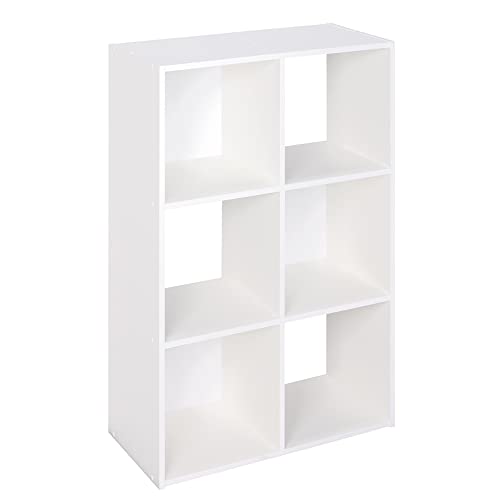
The step-by-step guide “How to fold clothes neatly” aims to provide a clear and easy-to-follow method for properly folding clothes. This guide is perfect for anyone who wants to maintain a well-organized wardrobe or simply make the most efficient use of their storage space. By following the steps outlined in this guide, you will be able to fold your clothes neatly and effortlessly, ensuring that they stay wrinkle-free and easy to find. Whether you are a neat freak or just someone looking to improve their organizational skills, this guide is the perfect resource for achieving a tidy and stylish wardrobe.
Top Selling Fashion Trends
Sort and separate your clothes
Separating your clothes into different piles based on their type is a simple yet essential step in keeping your wardrobe organized. Start by gathering all your clothes in one place, whether it’s from the laundry or your closet. Then, systematically sort them into distinct piles according to their type.
For instance, create a pile for shirts, another for pants, and one for dresses or skirts. If you have specific types of clothing like sweaters or jackets, make separate piles for those as well. By doing this, you ensure that each type of clothing is grouped together, making it much easier to locate and maintain later on.
To give you a better idea, here’s an example of how to separate your clothes:
- Start with the shirts: Take all your shirts, whether they are t-shirts, blouses, or button-ups, and place them in a designated pile. This eliminates the need to search through different stacks when picking out a shirt later.
- Move on to the pants: Gather all your pants, including jeans, trousers, and shorts, and create a separate pile just for them. This makes it convenient when looking for the right pair to wear.
- Separate the dresses and skirts: If you have any dresses, skirts, or other similar garments, place them together in another pile. This ensures that your more formal or feminine attire is easily distinguishable.
Remember, the key is to assign a specific pile for each type of clothing, making it effortless to organize and navigate through your wardrobe. By simply sorting and separating your clothes, you will be able to fold and store them neatly, saving time and effort every time you get dressed.
Prepare a clean and flat surface
To prepare a clean and flat surface for folding your clothes, follow these simple steps:
- Find a suitable location: Look for a clean and flat surface in your home. A table or bed works well, as long as they are free from any dirt, dust, or clutter that could transfer onto your clothes.
- Clean the surface: Before you start folding, make sure to dust off and wipe down the table or bed. This will help ensure that no particles or debris will come into contact with your clothes during the folding process.
- Remove any objects: Clear the surface of any objects, such as books, electronics, or other items, to create ample space for folding. Doing this will give you more room to work with and prevent any accidental damage to your belongings.
- Create a flat surface: Smooth out any wrinkles or lumps on the table or bed. This step is crucial to achieving a neat and even fold. Use your hands or a cloth to flatten the surface and remove any unevenness before you begin folding.
By following these steps, you will have a clean and flat surface ready for folding your clothes. This ensures that your garments are handled with care and eliminates the possibility of them collecting dirt or wrinkles during the process.
Start with shirts and tops
To start organizing your shirts and tops, begin by taking one garment and laying it flat on a surface. Smooth out any wrinkles or creases, and make sure the edges are aligned evenly. Next, fold the shirt in half vertically, matching the sleeves and shoulders together. This will create a nice, symmetrical fold in the middle.
Once you’ve folded it vertically, fold the shirt in half again horizontally. As you do this, tuck the bottom hem of the shirt under the collar. This will help keep the shirt folded securely and prevent it from unfolding or unraveling.
Continue following these steps for each of your shirts and tops, ensuring that each garment is folded neatly and compactly. By organizing your shirts and tops in this way, you can save space, keep them wrinkle-free, and easily see what you have in your wardrobe.
Fold pants and bottoms
One simple and neat way to fold pants or bottoms is to lay them flat on a surface. Start by making sure there are no wrinkles on the fabric and that the edges are aligned. Next, fold one leg of the pants over the other, ensuring that the seams match up perfectly.
Once you have the legs aligned, fold the pants in half vertically. As you do this, tuck the waistband under the folded legs. This helps to keep the pants compact and prevents them from unfolding easily. Repeat this folding process for all your pants and bottoms to keep them organized and save space in your wardrobe.
Fold dresses and skirts
To fold a dress or skirt, start by laying it flat on a surface, such as a bed or table. Smooth out any wrinkles and make sure the edges are aligned.
- Fold in half vertically: Take one side of the dress or skirt and fold it over, aligning it with the other side. This will create a long, narrow shape.
- Fold in half horizontally: Next, fold the dress or skirt in half again, but this time horizontally. Bring the bottom hem up to meet the folded edge at the top. Make sure the bottom hem is neatly tucked under the folded top.Example:Follow these steps for all your dresses and skirts to keep them neat and organized in your wardrobe. Happy folding!
Fold smaller items
To fold smaller items such as socks, underwear, and accessories, follow these simple steps for a neat and organized result. First, gather the items you wish to fold together. Lay them flat on a clean surface, ensuring that they are smooth and unwrinkled.
Next, fold each item individually by bringing the sides towards the center, creating a compact rectangle or square shape. Smooth out any creases as you fold to maintain a tidy appearance. For socks, it is recommended to fold them together in pairs.
Once the smaller items are folded, find a suitable place to store them. One option is to tuck them into the pockets of your folded clothes, such as jeans or sweaters. This way, you can keep all your garments and accessories together in one place, making it easy to find them later.
Another option is to place the smaller items in a separate container specifically designated for accessories or undergarments. This could be a small box, drawer organizer, or even a fabric pouch. By keeping them separate, you can easily locate what you need without rummaging through the rest of your folded clothes.
Following these steps will help you efficiently and compactly fold smaller items like socks, underwear, and accessories, allowing for better organization and maximizing your storage space.
Organize and store your folded clothes
To organize and store your folded clothes, follow these simple steps:
- Sort by type: Start by grouping your folded clothes into categories such as shirts, pants, skirts, dresses, etc. This will make it easier to locate specific items when you need them.
- Allocate space: Assess the available storage space in your closet or drawers. Determine how much room you have for each category of clothing and adjust accordingly.
- Use dividers or bins: Invest in dividers or small bins to separate and organize different types of clothing within each category. For example, use dividers to section off your shirts by color or style, or use bins to separate your socks and undergarments.
- Label containers: If you opt for bins or containers, labeling them can be extremely helpful. Write or print labels indicating what items are stored in each container. This will save you time and effort when searching for something specific.
- Utilize vertical space: Make the most of your closet’s vertical space by using hanging organizers or shelves. Hang items like dresses, blouses, and pants on hangers, while placing folded clothes on the shelves. This will maximize your storage capacity.
Remember, the key to maintaining neatness and easy access is to consistently put clothes back in their designated spots. By following these organized storage strategies, your folded clothes will stay in order, making your daily routine more efficient.
Final Tips for Neatly Folding Clothes
In conclusion, mastering the art of folding clothes neatly is not as challenging as it may seem. By following the steps outlined in this guide, you can transform your messy piles of clothes into neatly folded stacks. Remember to start with the essentials, such as shirts, pants, and towels, and use the folding techniques that best suit each type of garment. Practice and patience are the keys to achieving impeccable results. So go ahead and give it a try – you’ll be amazed at the difference it can make in your wardrobe organization and overall tidiness.
Essential Supplies
Efficient Folding Methods
Step-by-Step Guide to Using Clothing and Accessories
- Start with the basics: Begin by building a collection of essential clothing items that can be easily mixed and matched. This typically includes a few pairs of jeans, basic t-shirts, button-up shirts, and versatile dresses
- Consider your personal style: Explore different styles and trends to determine what suits your personality and makes you feel comfortable. Experiment with different colors, patterns, and silhouettes to find your own unique style
- Pay attention to fit: Proper fit is key to looking and feeling good in your clothing. Make sure that your clothes are neither too tight nor too loose. Take your measurements and refer to size charts before making purchases online, or try things on when shopping in person
- Accessorize wisely: Accessories can elevate any outfit and add a personal touch to your look. Start with simple accessories like a statement necklace, a classic watch, or a versatile handbag. Don’t be afraid to experiment with different accessories and find what suits your style best
- Take care of your clothes: Proper care and maintenance extend the lifespan of your clothing. Follow the care instructions on the garment labels, separate your laundry by color, and avoid over-washing or using excessive heat when drying. Regularly inspect your items for any repairs or alterations that may be needed to keep them in good condition
- Remember, building a wardrobe is a journey, and as a beginner, it’s important to take your time, experiment, and have fun with it!











The folding hacks mentioned in this article are genius. I can’t wait to try them out.
I’ve always struggled with folding sweaters neatly. Any tips specifically for that?
I never knew there were so many ways to fold clothes. This article is very informative.
I appreciate the step-by-step instructions. It makes it easier to follow along.
Great article! These tips really helped me improve my folding technique.
I like that the article mentioned how to fold delicate fabrics properly. I always worry about damaging my clothes.
I’ve shared this article with my friends. It’s a must-read for anyone who wants to keep their wardrobe organized.
I struggle with folding fitted sheets. It would be great if there was a separate article on that topic!
Thanks for the reminder to declutter my wardrobe before folding. It makes a big difference!
The pictures in the article were very helpful. Visual aids are always a plus.